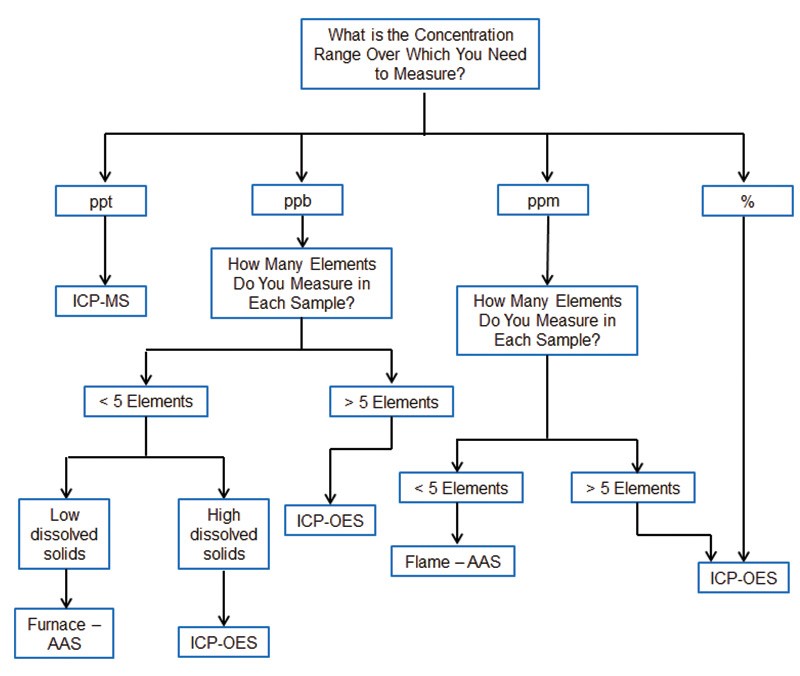Identifying the Best Analytical Method for Success
Trace Elemental Analysis Chemical Solutions for Every Laboratory
By offering a variety of products and chemicals for identifying and measuring organic and inorganic elements at parts-per- trillion (ppt), parts-per-billion (ppb) or parts-per-million (ppm) levels, the Fisher Scientific marketplace enables scientists in environmental, industrial, food, and health markets to work smarter and faster — giving you the confidence and flexibility to meet the changing demands of regulations, research and development.
Use the decision tree (shown on the page) to help you identify the best analytical method for your particular needs.

Regardless of the method used, most analytical methods for trace elements include similar steps:
Sample Preparation
Collection: Samples for trace metal analysis must be properly collected, usually using pre-cleaned or certified containers to eliminate external contamination.
Digestion: Some materials may need to be physically modified by grinding or chemically treated to release the trace substances to be measured.
Filtration: Pre-analysis sample filtration reduces extraneous materials and particulates that may damage chromatography columns.
Dilution: Concentrated samples may require dilution before assay.
Sample Analysis
Calibration: Most analytical instruments require calibration before use to ensure result accuracy.
Assay: Sample testing may require the use of in-assay standards that can be used to validate results.
Data Analysis and Interpretation Results
Software: Programs are available to assist scientists with calculating results that can be used to determine industry or regulatory compliance.
Making the Best Selections
Chemicals play a vital role in many steps of these analyses, and selecting the right grade or purity level can help to ensure that your results are reliable and repeatable, and that the data is valid. Proper sample preparation can also protect your instruments from damage that can shorten their work lifespans.
Choose the right grade of acids, bases, water, standards, solvents, buffers, solutions or other reagents to make your analyses successful.



